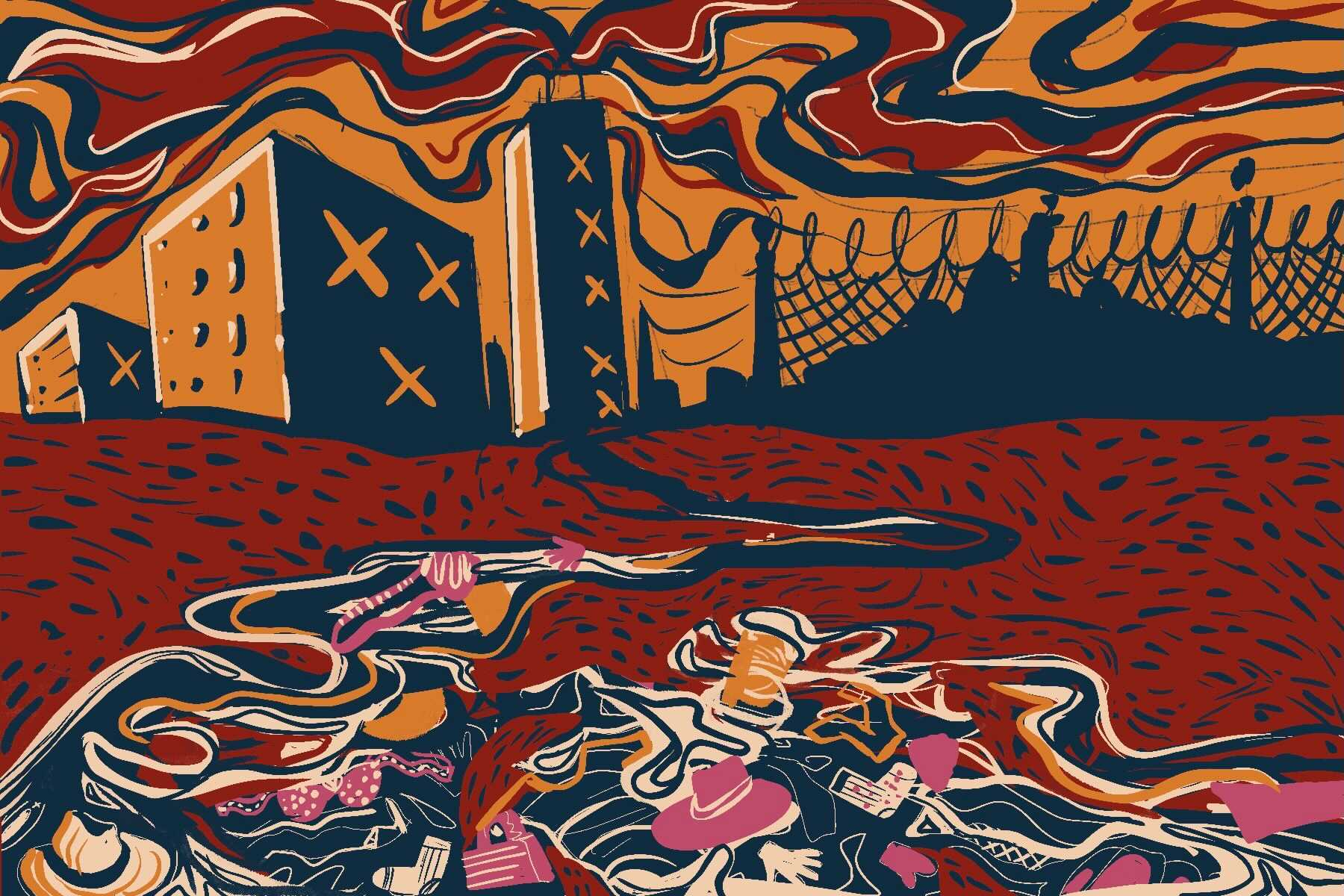Unless you’ve actively avoided the most urgent and relevant complications of the world today, the term “fast fashion” should be a familiar one. A hub of extensive information on the subject matter has been made available over the past few years: Articles, videos, podcasts and social media posts have made us each aware — to some degree or another — of how the dangerous aspects of this ephemeral side of modern-day consumerism affect the world. Yet as the realities of fast fashion in environmental conservation and labor injustice become increasingly apparent, the question remains: Who is actually responsible for the perpetuation of this problem, and is the solution as realistic and black and white as we want it to be?
The nature of fast fashion has been discussed in many ways and from many angles, and with the sheer number of unsustainable brands that pop up, identifying fast fashion shops has become more common. Briefly, “fast fashion” refers to clothing and fashion accessories — usually lower quality mimics/knockoffs of expensive high-end fashion pieces — that are produced at an alarmingly rapid rate with cheap, low-quality resources and unethical labor practices. Items manufactured in this way usually lack structural longevity and value and are ultimately discarded soon after purchase.
By catering to the whims of retail therapy in this way, fashion trend cycles become smaller and more transient until fleeting “micro-trends” are left in their wake, which further perpetuates the problem and keeps the proverbial wheel turning. Life in the COVID-19 pandemic has done little to oppose the problem, especially with access to online shopping from popular fast fashion brands like Shein and social media platforms like Instagram and TikTok to promote the “hauling” fad (more on that below).
Truthfully, the realities of fast fashion are not new ones: The 2013 Rana Plaza incident left us silent and berated for our ignorant bliss on how the “affordable” fashion we have access to is made, who makes it and how they’re treated. However, despite dedicating an entire week of the year to the incident, which is graciously named “Fashion Revolution Week,” a largely apathetic response to the sentiments of the cause subsisted for many years after. In fact, it wasn’t until almost 10 years later that the pressing nature of the overall effects that fast fashion has on the world became urgent enough to warrant our undivided attention.
Fast fashion isn’t just bad for trends and the perception of fashion: More tangible, real-life effects put pressure on the environment, the workforce and even consumers. It’s no secret that fabric dyes can be extremely toxic to animals and the environment, especially cheaper ones that are manufactured with less regard for ethical environmental impact.
Even the type of fabrics used — both natural and synthetic — can result in the same negative consequences, with man-made fabrics such as polyester creating sizably problematic micro-fibers and natural materials like leather that undergo harsh chemical treatments and pump out toxic waste. This waste often permeates into the soil, water and areas easily accessed and consumed by animals. Animals themselves become industry victims when wool, skins and furs are sought out as large-scale resources, with the use of animal-based products remaining a consistent point of scrutiny in the fashion industry.
Economic and consumer impact largely influences developing countries where cheap, hazardous and unethical labor is utilized to make garments at a terribly fast rate that serves as the main pillar of fast fashion. Despite low financial compensation, a pressing need for work forces men, women and children to labor under hazardous conditions and inhumane management for clothing they don’t get to wear. To add insult to injury, companies who claim to “go green” under the facade of good brand image do so with such little effort that their attempts are ultimately negligible.
The punchline to all this is that the people who perpetuate the fast fashion lifestyle are not the average-income population who shop according to an affordable budget because ultimately, sustainable and slow fashion — the proposed solutions to fast fashion — is not financially viable for most people. While sustainably sourced work is ethical and more just to the designers and laborers involved, it is shockingly more expensive than the fast fashion we’re all used to, and unfortunately a privilege at this stage.
Blame should not be put onto students or average-income people who simply can’t afford a linen-based capsule closet with two pairs of leather boots and a single duck-down coat per season. The company morals of Topshop and H&M are not your responsibility to change. The truth is — at the risk of sounding pious — the people who can afford $1,000 Shein orders and seasonal sprees at Zara are more to blame because the financial investments they make in their closets should not be purchased in sloppy hauls of which only a portion of items get kept for a few months at most while the rest is thoughtlessly discarded.
That being said, there are a few things we can all do to improve the situation. Garment disposal should not be a thoughtless process — try your best to get as much life out of an item as possible. Mend small holes yourself, upcycle old items into something new and do your best to take care of the clothing you have. When you buy something, take time to consider its value in your wardrobe — question its longevity, quality and the brand image of the item you want to buy, and if new items start becoming despicably expensive, consider thrifting. A lot of clothing has enough life in it for more than one use — don’t catch yourself stigmatizing the ideal of second-hand.
For now, it doesn’t seem like fast fashion brands are disappearing any time soon, and the responsibility of their perpetuation should not feel like a burden to someone who wants a cute summer dress but can’t yet afford the prices of sustainable shops. However, despite this Catch-22, there are still things people can do to slowly reverse the problem and make a difference. We are all human, and we all deserve to be treated with respect and dignity. Perhaps in the near future, the unethical harms of fast fashion on the laborers who keep this industry alive will be eradicated, and smarter wardrobe investments will become the norm.

















